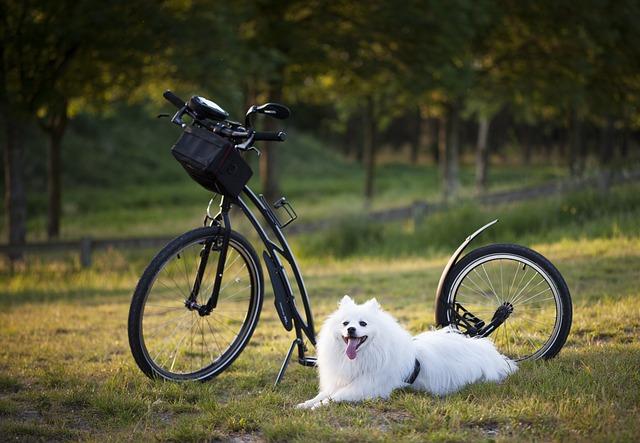Welcoming a furry friend into your home can bring immense joy and companionship, but it also comes with its own set of challenges—one of the most common being excessive barking. While barking is a natural form of communication for dogs, it can become problematic if it disrupts your household or disturbs your neighbors. If you’re seeking a harmonious balance, understanding the best ways to train your dog to stop barking is essential. In this article, we’ll explore effective and compassionate techniques to help you address this issue, ensuring a peaceful environment for both you and your canine companion. With patience, consistency, and a touch of love, you can guide your dog towards more serene behavior, strengthening the bond you share. Let’s embark on this journey together, transforming barking challenges into opportunities for growth and understanding.
Understanding Why Your Dog Barks and How to Address It
Barking is a natural form of communication for dogs, but when it becomes excessive, it can signal underlying issues that need addressing. Understanding the root cause of your dog’s barking is essential in crafting an effective training strategy. Dogs bark for various reasons, including:
- Alertness: Your dog might be warning you of potential intruders or changes in their environment.
- Fear or Anxiety: Loud noises or unfamiliar situations can trigger this response.
- Boredom: Lack of physical or mental stimulation can lead to excessive barking.
- Seeking Attention: Dogs often bark to get a response from their owners.
To address these behaviors, start by observing the situations that trigger your dog’s barking. Once identified, you can employ training techniques tailored to their specific needs. Positive reinforcement is a powerful tool—reward your dog when they exhibit calm behavior in situations where they would typically bark. Consistency and patience are key, as these adjustments take time. If needed, consider consulting a professional dog trainer to guide you in more complex cases.

Creating a Calm Environment to Reduce Excessive Barking
To help your furry friend maintain a serene demeanor, it’s crucial to craft an atmosphere that encourages peace and relaxation. Start by creating a designated quiet zone within your home. This space should be free from excessive noise and distractions, offering your dog a place to retreat when they feel overwhelmed. Consider incorporating soft, cozy bedding and perhaps a few favorite toys to enhance the comfort of this area.
- Minimize loud noises: Use soft music or white noise machines to mask unsettling sounds from outside.
- Maintain a routine: Dogs thrive on predictability, so establish consistent times for meals, walks, and play to help reduce anxiety.
- Use calming scents: Essential oils like lavender can have a soothing effect on dogs, but ensure they are safe for canine use.
By nurturing a tranquil environment, you help your dog feel secure and less inclined to bark excessively, setting the stage for successful training.

Positive Reinforcement Techniques for Quiet Behavior
When it comes to encouraging your furry friend to embrace the peace and quiet, positive reinforcement can be your most powerful ally. By focusing on rewarding your dog for calm behavior, you create a strong association between being quiet and receiving positive attention. Here are some techniques to consider:
- Treat Rewards: Keep a stash of your dog’s favorite treats handy. Whenever your dog is quiet in situations that usually trigger barking, immediately reward them with a treat. This helps them understand that silence brings delicious rewards.
- Praise and Affection: Sometimes, a loving word or a gentle pet can be just as effective as treats. Lavish your dog with praise and affection when they remain calm, reinforcing that quiet behavior earns them your attention.
- Clicker Training: Use a clicker to mark the moment your dog stops barking. Follow up with a treat or praise. Over time, your dog will associate the click sound with being quiet and getting rewarded.
- Interactive Play: Engage your dog in a favorite game or activity when they’re calm. This not only rewards their quiet behavior but also strengthens your bond through shared fun.
Incorporating these techniques into your daily routine can transform the way your dog perceives quiet moments. By focusing on positive reinforcement, you nurture an environment where tranquility is naturally desired and lovingly rewarded.

Consistency and Patience: Key Elements in Bark Training
Training your dog to curb excessive barking requires a blend of consistency and patience. These two elements are the bedrock of effective bark training. When your dog barks, it is crucial to respond the same way every time. This might mean issuing a command like “quiet” or “enough,” paired with a hand signal. Consistent repetition helps your dog understand that certain behaviors lead to specific outcomes. Without this steadiness, your furry friend may become confused, potentially leading to more barking instead of less.
Patience is equally vital. Understand that change won’t happen overnight. Your dog might take some time to grasp the concept, and there will be days when progress seems slow. Celebrate small victories and remember that setbacks are part of the process. Here are a few tips to maintain your patience:
- Stay calm: Yelling can increase anxiety and barking.
- Take breaks: If you feel frustrated, pause the training session.
- Focus on the positive: Reward quiet behavior with treats or affection.
By maintaining a consistent routine and exercising patience, you’ll foster a learning environment where your dog feels secure and motivated to adapt to new behaviors.

